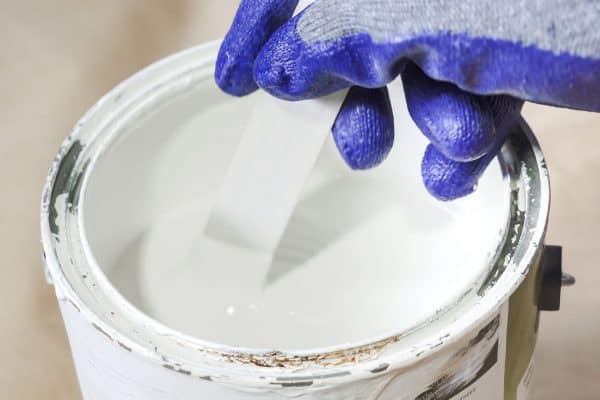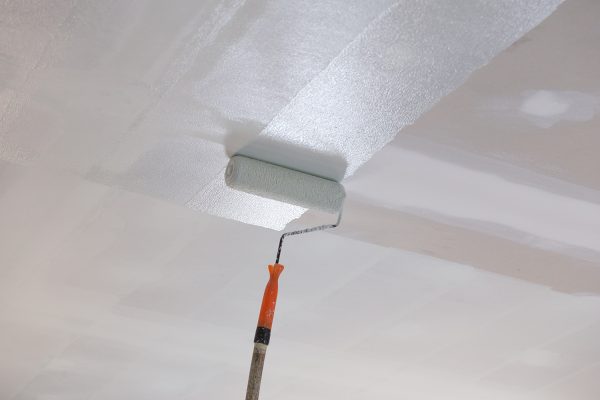If you're redecorating your home, you may want to create a lighter, cozier vibe. Benjamin Moore White Sand paint can give your home that feeling when paired with the right colors. We researched and compiled a list of colors that go well with White Sand to help with your home renovation.
Paint colors like White Sand by Benjamin Moore may look warmer or cooler, depending on the furniture and fixtures in your house. Here are some colors that work well with White Sand to bring a more cohesive look to your home:
- Brown
- Mustard yellow
- Sage green
- Lavender
- Magenta
White Sand is a great place to start if you are new to interior design. It allows your personality to shine through instead of being overshadowed by bold colors or patterns. Keep reading to discover more about the colors that go well with White Sand for your home's interior.
Colors That Work Well With White Sand
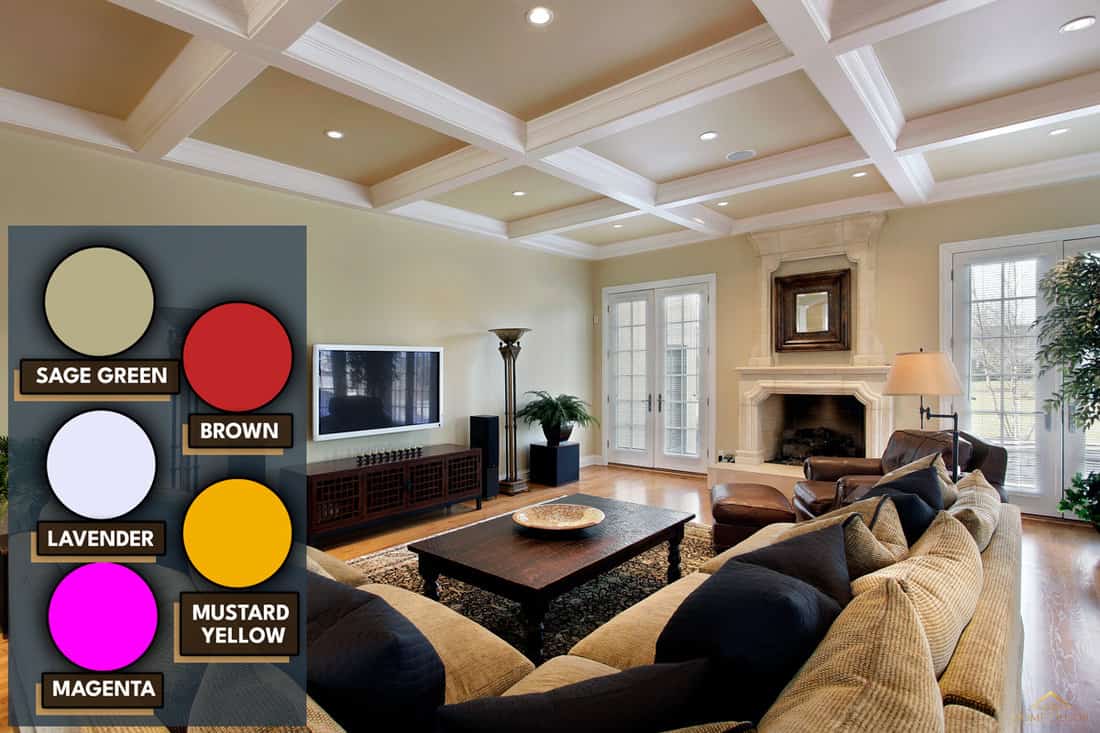
Consider neutral colors for your walls or floors when building or renovating your home. This will make it easier to add color accents in other rooms.
Warm greiges, like White Sand, will look different based on your interior design, accents, and lighting. However, you can use a warmer greige as a substitute for beige. Listed below are some colors that look great with White Sand.
Brown
Brown, typically seen as a neutral and organic hue, is often associated with emotions of coziness, safety, and earthiness. Brown feels natural and comfortable because it is associated with organic materials like leather and wood.
You can pair this brown with other colors without clashing. White Sand complements either dark brown or light straw shades. Colors such as this enhance the tonality, texture, and form of your furnishings.
Using it as an accent color is an excellent way to bring together the comfort of brown and the relaxing environment of White Sand. It brings warmth to a space without being too dark.
How to use brown and White Sand at home:
Combining White Sand with wood tones can help you create a cappuccino-inspired look with a blend of coffee and cream colors. It's a great way to play off the paint's warm, greige, earthy qualities and bring out its deeper, warmer tones.
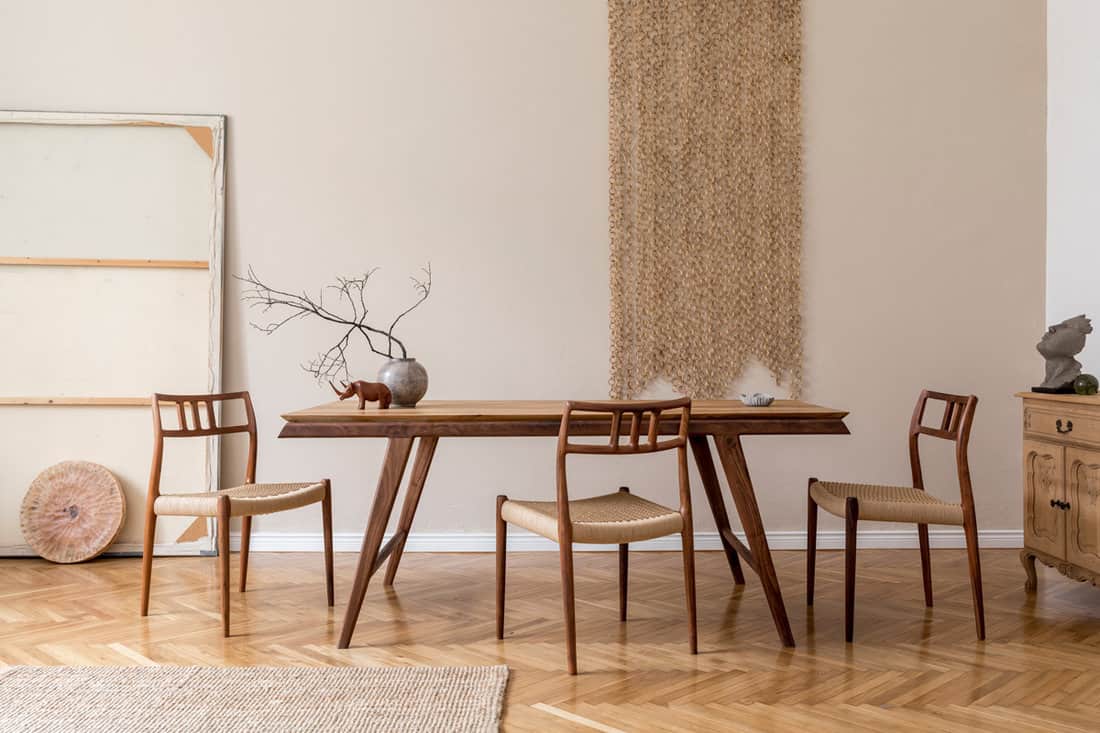
We may include affiliate links and curated AI content to highlight top design styles.
With this color combination, your living room will look inviting if you add shag carpeting, bamboo shades, and wooden furniture.
Mustard Yellow
White Sand looks great on walls with natural light. However, there is a big difference in how the paint looks based on whether you use it in a north- or south-facing room.
Rooms exposed to the north should have warm colors, while rooms exposed to the south should have cool colors.
If your bedroom faces north, you can use a color like mustard yellow to brighten the space. Mustard yellow is an invigorating color that evokes sensations of warmth.
How to use mustard yellow and White Sand at home:
Mustard yellow can also act as an accent hue to maintain the light appearance. The overall impact is a sophisticated look that is timeless.
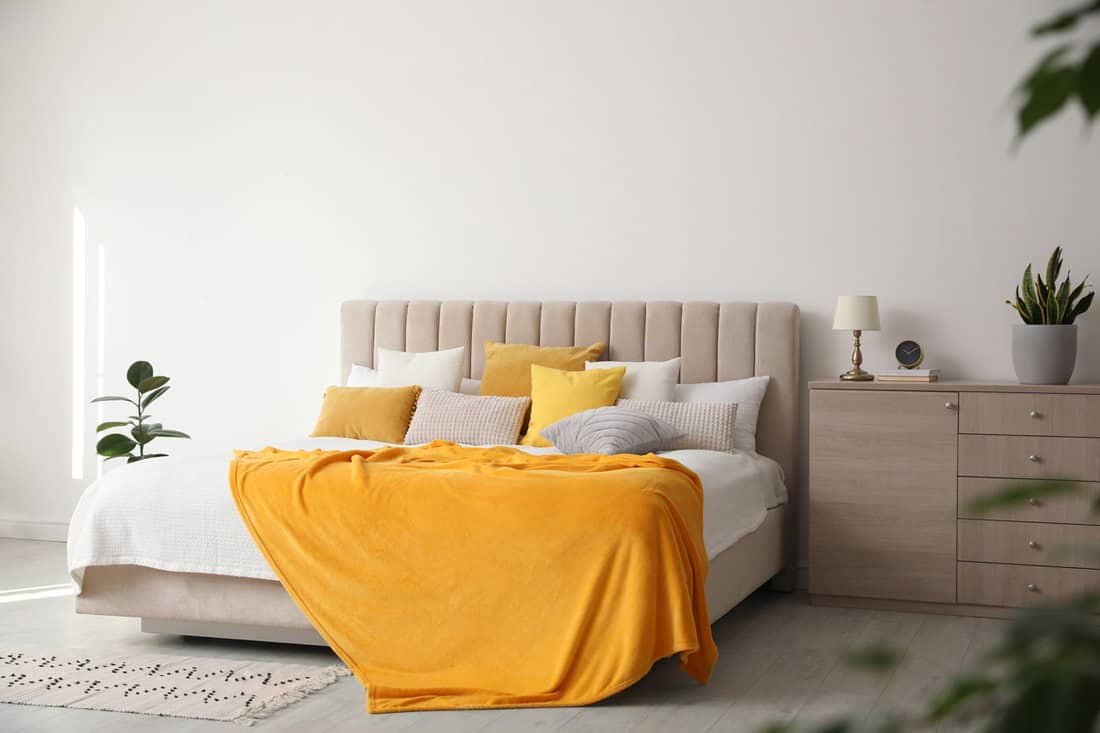
You can pair a mustard yellow accent wall with White Sand. For an extra splash of color, add a mustard yellow throw blanket to neutral bedding.
Check out this mustard yellow throw blanket on Amazon.
Sage Green
Sage green evokes tranquility, nature, and vitality. You can use the color to redesign your space or refresh it with accents and accessories.
Sage green and White Sand can work together to create a relaxing modern design. Since White Sand is a natural color, it works best when combined with other earthy colors. The beige tones of White Sand create a cozy, peaceful atmosphere, while sage green adds a touch of nature.
How to use sage green and White Sand at home:
Sage green complements many design aesthetics, including Scandinavian, bohemian, natural, and minimalist.
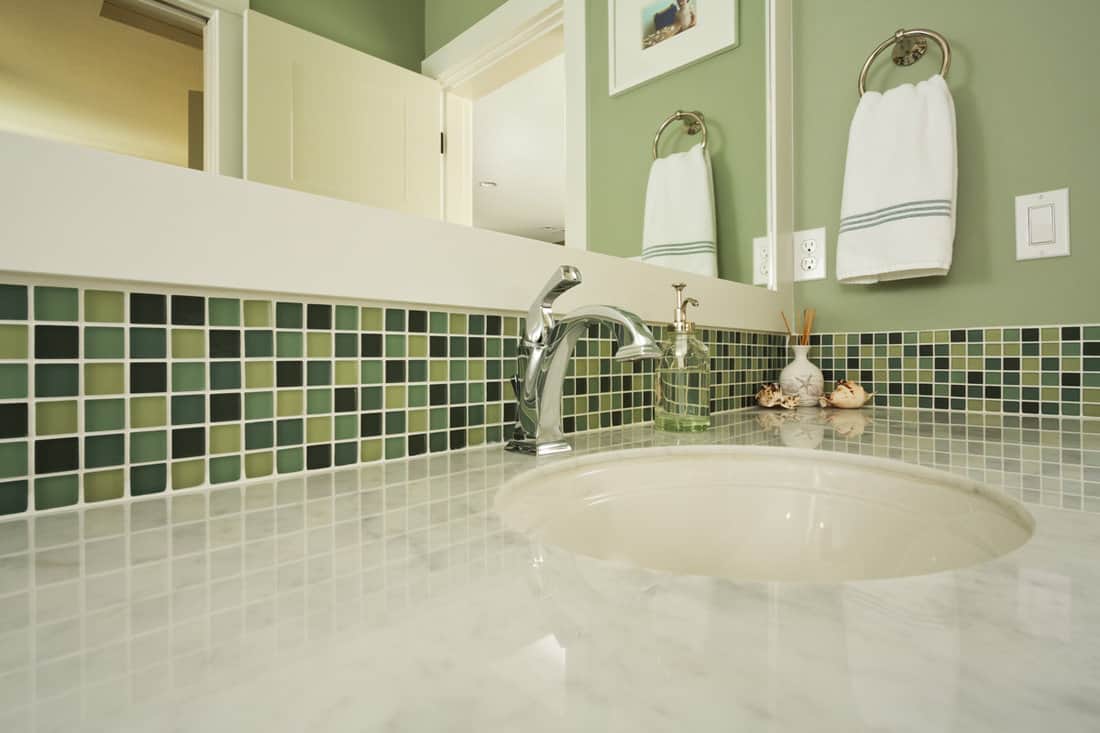
You can make White Sand more relaxing by pairing it with a soft sage green color, like the light tint on the vanity cabinet and tiles in the photo above. The right color scheme can make your bathroom feel like a peaceful haven.
Lavender
Lavender evokes harmony and luxury. It can be calming, gentle, motivating, and uplifting all at the same time. It also blends well with a variety of other colors. Together, lavender and White Sand can create a calming atmosphere in just about any room.
White Sand can soften purple and bring harmony with its earthy tones. Purple will look luxurious next to White Sand if you want a well-balanced aesthetic.
How to use lavender and White Sand at home:
Neutrals like White Sand work well in small spaces because they create an airy, open feeling. They won't clash with a busy wall or floor color. Using lavender as an accent color with White Sand will take the room to a new level.
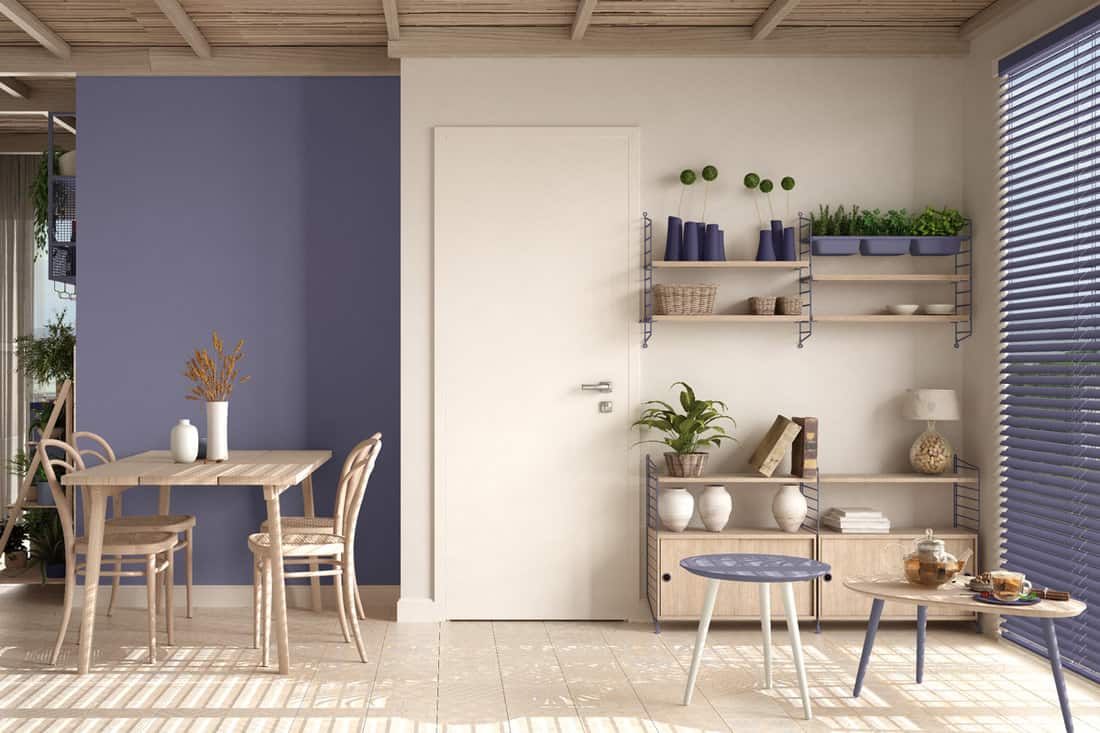
You can create the look above by adding lavender decorative art pieces or lavender plants to your space. With this design style, the accent decor stands out against the White Sand, adding a luxurious feel.
Check out this purple dream catcher on Amazon.
Magenta
Red is a powerful, life-giving color. Magenta, as intense as crimson red, blends excitement with softness. The mix can add a lot of character to your home while inspiring comfort.
Combining White Sand with magenta makes for a sophisticated, modern look. A subdued earth tone like White Sand can also balance magenta's bold color.
How to use magenta and White Sand at home:
Leverage the red-meets-pink on furniture and keep the rest of the space neutral when decorating your home with magenta. Magenta cozies up with White Sand while keeping the focus on its rich color. It can make a room look elegant and dramatic.
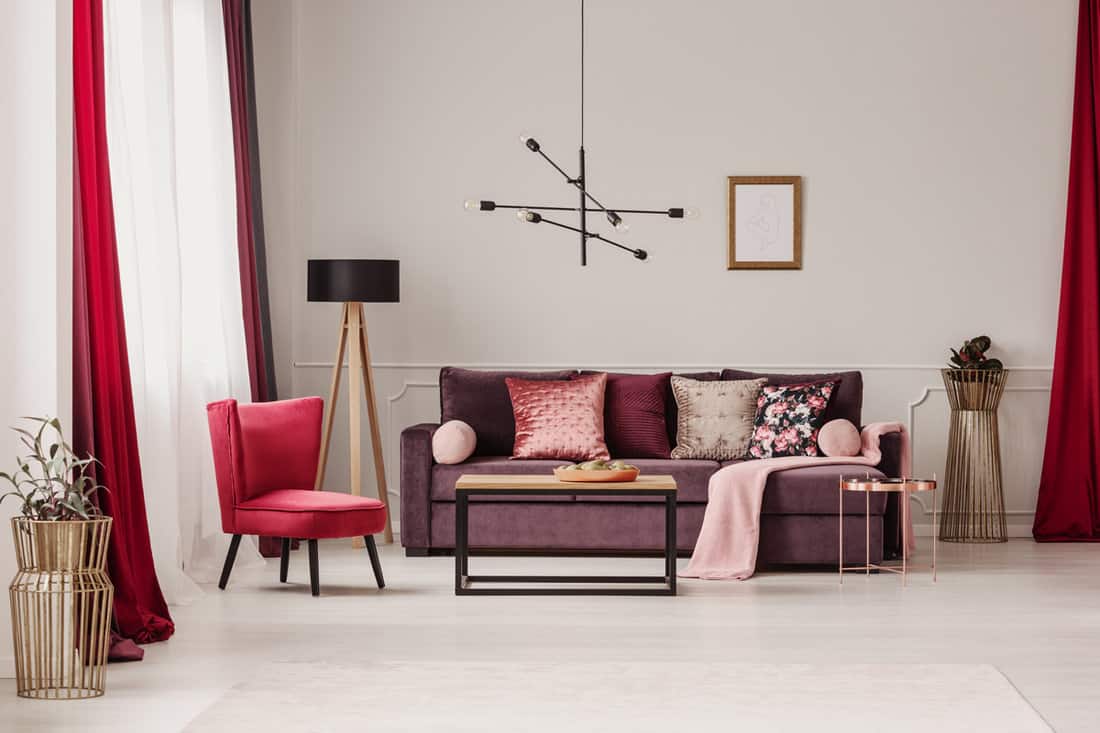
Try pairing White Sand with magenta accent pieces, such as a throw pillow or lampshade, throughout your home.
Check out this magenta pillow cover on Amazon.
What Color Is White Sand By Benjamin Moore?
Benjamin Moore's Off White color family includes White Sand (964). White Sand is a soft, modest beige color that's perfect for classic and modern settings.
White Sand's light reflectance value (LRV), which describes the proportion of light reflected from a surface, is 66.95. Note that LRVs range from 0-100, with 0 being completely black and 100 being pure white.
Is White Sand A Warm or Cool Color?
Benjamin Moore's White Sand is a warm greige with more beige than gray. The simplest way to explain it is to contrast White Sand with other interior paint hues. If you're planning to paint with White Sand, keep in mind that it is not off white or yellowy beige.
How Does White Sand Compare With Other Neutrals?
Benjamin Moore offers several neutral paint shades in different lines.
Muslin
Benjamin Moore's neutral muslin paint has pink undertones with an LRV of 66.54. White Sand, in comparison, is a subdued beige color.
Muslin is a cozy, inviting neutral that encapsulates the natural appeal of organic materials. Benjamin Moore offers muslin in its Classics line.
Edgecomb Gray
Benjamin Moore's Edgecomb gray is a go-to neutral with an LRV of 63.09, while White Sand is warmer and lighter at 66.95. Edgecomb gray paint is part of Benjamin Moore's Historical Colors set.
Bottom Line
A greige color, White Sand by Benjamin Moore, pairs well with other neutrals. It also works well with bright colors when used in smaller amounts.
If you're looking to update the color scheme in your house, having a few paint swatches on hand can be helpful. This will help you get the right tone while ensuring the final coat is what you want.
If you don't have the time or talent to pick the right paint, hire an interior designer to help you select the best colors. This may take a little extra effort and money, but it will be worth it when you can sit back and enjoy your home.
To learn more about Benjamin Moore's paint recommendations and tips, read these articles:
Sherwin Williams Alabaster Vs Benjamin Moore White Dove: What Are The Differences?
What Kind Of Paint & Finish To Use On Handrails? [Inc. Tips & Tricks]




